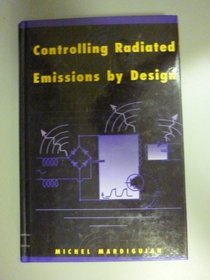Search -
Controlling Radiated Emissions By Design : EMI/RFI reduction (Electrical Engineering)
Controlling Radiated Emissions By Design EMI/RFI reduction - Electrical Engineering
Author:
In all possible industrial, military and household/personal applications, the number of digital devices operating with data rates of hundreds of Megabits, using processor chips with Gigahertz clocks, has increased astronomically. At the same time, a myriad of popular RF receivers like portable telephones, laptop PCs with integrated wireless mode... more »
Author:
In all possible industrial, military and household/personal applications, the number of digital devices operating with data rates of hundreds of Megabits, using processor chips with Gigahertz clocks, has increased astronomically. At the same time, a myriad of popular RF receivers like portable telephones, laptop PCs with integrated wireless mode... more »
ISBN-13: 9780442009496
ISBN-10: 0442009496
Publication Date: 12/31/1992
Pages: 292
Rating: ?
ISBN-10: 0442009496
Publication Date: 12/31/1992
Pages: 292
Rating: ?
0 stars, based on 0 rating
Genres:
- Computers & Technology >> Computer Science >> Circuitry >> Circuit Design
- Computers & Technology >> Computer Science >> Circuitry >> Electromagnetics




